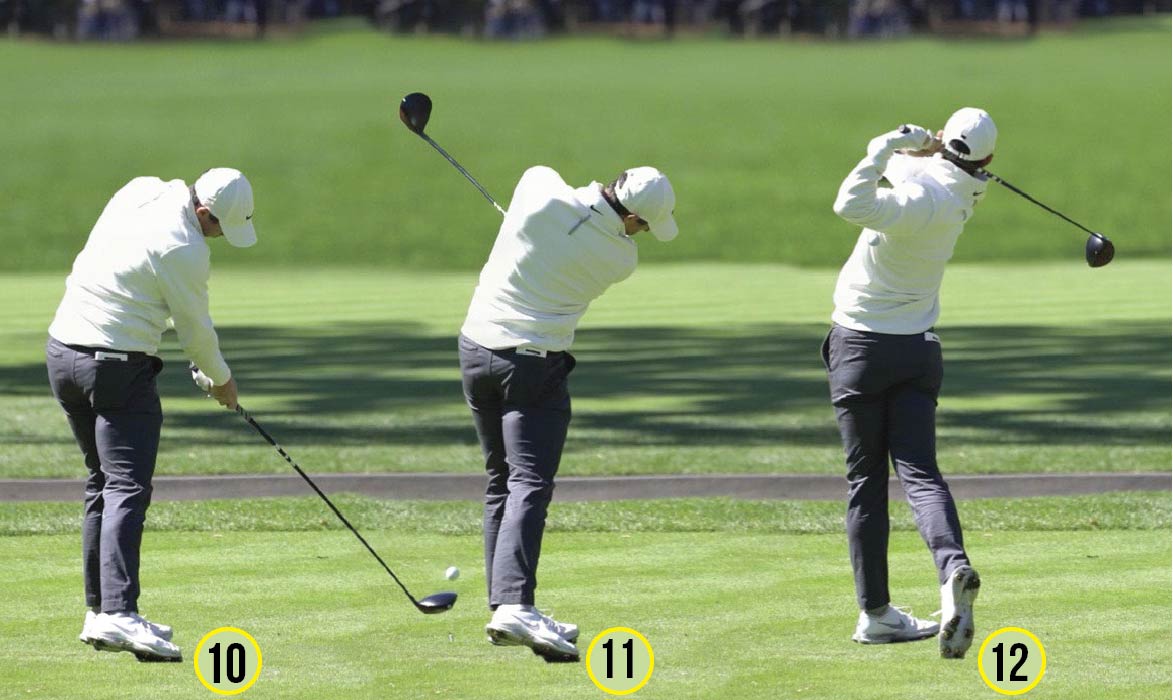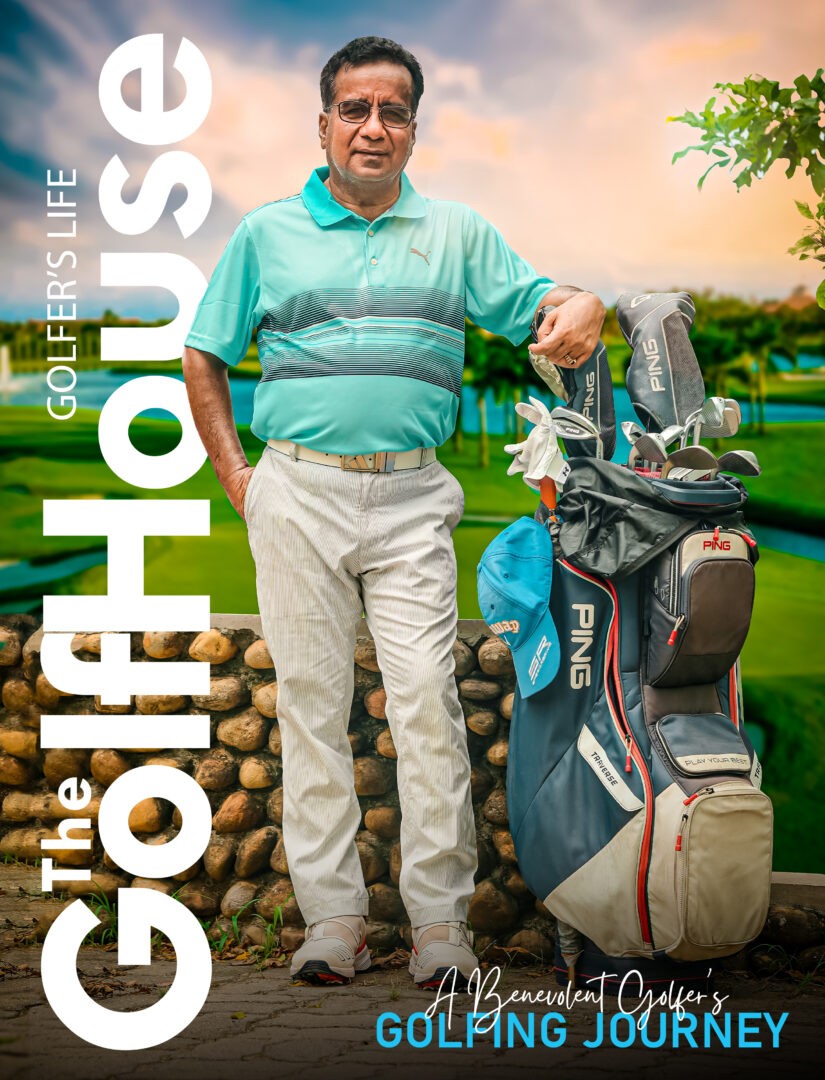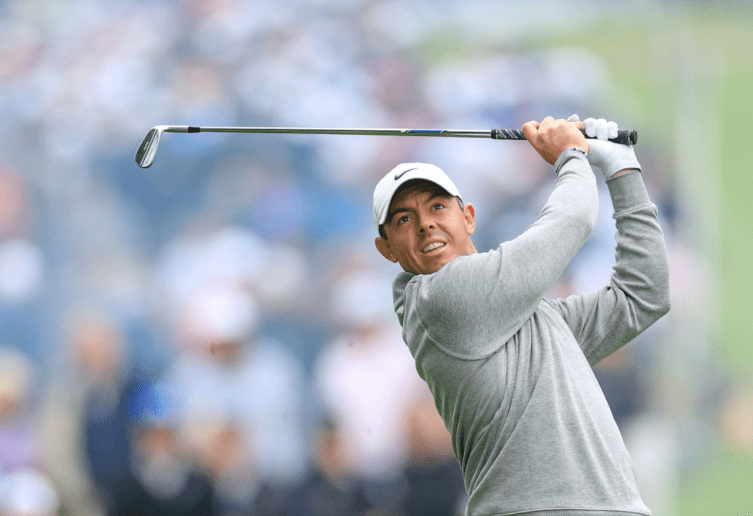When Rory McIlroy is in full-flight, brimming with confidence, he makes the game look so damn easy. His play since October last year has been closing in on the incredible run of form he produced back in 2014 when he had four victories, including two major championships.
His recent Canadian Open win was his 33rd victory worldwide and validation of the work he has been doing with longtime coach, Michael Bannon, since the pair reunited post-COVID lockdowns.
At the time of writing, the World No.2 was leading several key PGA Tour statistical categories including the scoring average with 68.635.
He blends orthodox technique with his own unique moves, which require great flexibility and strength. However, there are elements of his swing every golfer can try and mimic to improve their ball-striking and achieve greater distance with every shot.
Over the following pages, examine McIlroy’s swing sequence and try to emulate some of the key positions of his swing – like the address position, his takeaway and release.

1. ADDRESS
Rory’s set-up is relaxed. There is no sign of any tension at all here. His arms hang down nicely from his shoulders, while his posture doesn’t seem forced or uncomfortable. McIlroy has been well coached from an early age as his body is aligned beautifully to the target. His feet, knees, hips and shoulders are all parallel to the target line running through his ball.
2. THEFIRST MOVE
McIlroy’s takeaway is very much a onepiece takeaway where the clubhead, arms and shoulders move together. His hips have remained relatively square to the target line and his knees have hardly moved. One more thing to note is the slight turn of Rory’s head to the right, which will allow his left shoulder to tuck under his chin later.
3. HALFWAY BACK
There’s not a lot of hand and wrist action as he reaches the halfway mark of his backswing. Note how his left arm and the club shaft are on a parallel line to his toe line, which is also parallel to the target line through the ball. Also, keep an eye on Rory’s head here and over the next three swing positions as it stays at the same level it was at address.
Also Read: BALI NATIONAL GOLF COURSE; PLAYING IN PARADISE

4. ADDRESS
Rory’s set-up is relaxed. There is no sign of any tension at all here. His arms hang down nicely from his shoulders, while his posture doesn’t seem forced or uncomfortable. McIlroy has been well coached from an early age as his body is aligned beautifully to the target. His feet, knees, hips and shoulders are all parallel to the target line running through his ball.
5. THEFIRST MOVE
McIlroy’s takeaway is very much a one piece takeaway where the clubhead, arms and shoulders move together. His hips have remained relatively square to the target line and his knees have hardly moved. One more thing to note is the slight turn of Rory’s head to the right, which will allow his left shoulder to tuck under his chin later.
6. HALFWAY BACK
There’s not a lot of hand and wrist action as he reaches the halfway mark of his backswing. Note how his left arm and the club shaft are on a parallel line to his toe line, which is also parallel to the target line through the ball. Also, keep an eye on Rory’s head here and over the next three swing positions as it stays at the same level it was at address.

7.THE POWER SQUAT
Rory’s transition into the downswing is all about releasing the power created in his coiling backswing. His hips turning left have started the downswing, increasing the torque even more. The increased flex in his legs is preparing them to push hard against the ground and support the release of all his swing power into the ball.
8. THELAG
Lag is when the clubhead trails the hands in the downswing. By trailing the hands down into impact like Rory is here, you will achieve maximum clubhead speed at impact. The club shaft bisecting Rory’s right forearm is indicative of the swing being on plane.
9. THEFINAL APPROACH
McIlroy’s right elbow is sitting in nice and close to his turning torso, which is exactly what you need to achieve to ensure the clubhead path is from inside the target line. With impact just a split second away, it is important to note that Rory manages to keep his set-up spine angle through his backswing, downswing and now into impact.

10. MOMENT OFTRUTH
Nearly every long hitter in the game is ‘open to the target’ with their upper body at impact. This is an extension of the clubhead lag in the downswing. Here, his rotating hips have cleared the hitting zone and his shoulders and arms have just about caught up. Rory’s hips moved through the hitting zone first so you would expect them to be open.
11. FOLLOW-THROUGH
Rory continues to rotate through into the follow-through and the butt end of the club is ideally in front of his torso (as it was in the backswing), indicating the clubhead continues to be out in front of his turning body. More importantly, there is no over-rotation of the clubhead and he keeps it square.
12. BALANCED FINISH
His beautifully balanced finish position is indicative of maintaining good body angles and posture throughout the swing. Despite the speed of his swing, he has stayed balanced because he has rotated his body wonderfully well and kept his lower half stable throughout.






















